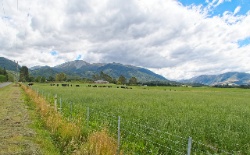National Climate Summary - Spring 2007
NATIONAL CLIMATE CENTRE
FRIDAY 14 DECEMBER 2007
National Climate Summary - Spring 2007: Very windy mid spring, dry with significant soil moisture deficits at the end of the season
- Sunshine: One of the sunniest springs on record in Horowhenua, Marlborough, and Nelson
- Rainfall: Below or near normal throughout New Zealand
- Soil moisture: Significant deficits in many regions at the end of the season
- Temperature: Near average everywhere
Spring 2007 was a mixed bag! The season started with snowfall to low levels in the east of the South Island, followed by one of the windiest Octobers on record, and ended with a very dry November.
The season was one of the sunniest on record in Horowhenua, Marlborough, and Nelson. It was also sunnier than normal in many areas from Canterbury to Southland.
Rainfall was below normal in many North Island regions, as well as much of Marlborough, Nelson, and along the south Canterbury to North Otago coast, and near normal elsewhere. Significant soil moisture deficits developed toward the end of October in parts of Marlborough and Central Otago and spread to Nelson and Canterbury in November. Significant deficits also developed in November in Bay of Plenty, Taupo, Gisborne, Hawke's Bay, Wanganui, and Wellington.
Mean temperatures were near average throughout the whole of New Zealand. The national average temperature of 11.9°C was 0.2°C below normal.
The overall spring climate pattern was dominated by more anticyclones in the Tasman Sea, with ridging extending over central New Zealand, producing more southerly quarter airflow than normal (although weak) over much of the country.
Major Highlights:
- The lowest air temperature during spring was -6.0ºC recorded at Fairlie on 6 September and Hanmer on the 7 September. The highest temperature recorded during the spring was 32.8 °C recorded at Blenheim Airport on 25 November.
- There were relatively few high rainfall events - the worst being rainfall totalling 102 mm at Kaitaia on 19 September, surface flooding in the Hutt Valley on 7 October, and an overflow of the Waiau River (in North Canterbury) on 8 October after days of rainfall. Heavy rainfall occurred in the central North Island, with 30 mm recorded at Ohakune in an hour on 17 October.
- Snowfall occurred to low levels in the east of the South Island on 4 September, and occurred in many high country areas over 2 - 7 October, 10 - 11, 14 - 15, and 17 - 18 October.
- Gale force events on 4 and 23 October resulted in fallen trees, broken power lines, and difficulty for motorists, in several regions of the country. Wind gusts over 130 km/h were recorded on 13 days in October.
- Of the five main centres, Auckland was the warmest, Wellington the wettest and sunniest, Christchurch the driest, and Dunedin the coolest this spring.
ENDS


 Citizens of the Sea: Sailors To Revolutionise Our Understanding Of Pacific Biodiversity
Citizens of the Sea: Sailors To Revolutionise Our Understanding Of Pacific Biodiversity Netsafe: Making A Splash With Online Safety: Netsafe Launches New Flagship Programme For Kids
Netsafe: Making A Splash With Online Safety: Netsafe Launches New Flagship Programme For Kids NZGBC: Flood Resilience PhD Student Widi Auliagisni Named Future Thinker Of The Year 2024
NZGBC: Flood Resilience PhD Student Widi Auliagisni Named Future Thinker Of The Year 2024 Business Canterbury: European Free Trade Agreement A Game-changer For Canterbury
Business Canterbury: European Free Trade Agreement A Game-changer For Canterbury Business Canterbury: Urges Council To Cut Costs, Not Ambition For City
Business Canterbury: Urges Council To Cut Costs, Not Ambition For City Wellington Airport: On Track For Net Zero Emissions By 2028
Wellington Airport: On Track For Net Zero Emissions By 2028



